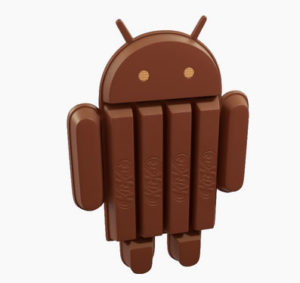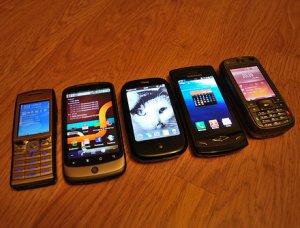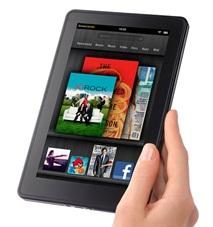Android 4.4 KitKat is a compelling update that includes support for the Internet of Things, security and better battery management.
Low Memory Device Support

KiKat works with devices with as little as 512MB of RAM. This opens the market for budget devices to use it without sacrificing performance. It doesn't eliminate disappointing low-end models like the Motorola Citrus from entering the market, but it can provide compelling incentive for handset makers to choose the latest version of Android. Memory management is automated by the system and OEMs can better target the most efficient memory usage for their devices. From developer.android.com:
KitKat streamlines every major component to reduce memory use and introduces new APIs and tools to help you create innovative, responsive, memory-efficient applications.
NFC Host Card Emulator
The NFC Host Card Emulator (HCE) facilitates secure, NFC-based transactions for digital payments and loyalty cards. Any app on the device can emulate an NFC smartcard when the user taps an NFC-enabled POS system. HCE automatically routes the transaction through the proper app. The digital wallet may not be dead after all with support like this built in.
Improved Printing Support
The new printing support uses a PDF workflow to transfer files, one by one, to a selected printing queue. Local printers and Google Cloud Print are both supported. Printer vendors are encouraged to create dedicated printing apps for their machines. Upgrades to the printing experience offer commercial printers and printer vendors a unique opportunity to work together, to provide an easy path to printing documents and photos with ease from any location. App integration with Web-to-print software would be a natural progression toward a previously untapped market. Long live print!
Unified Content Access
This framework brings content out of your apps and makes it visible from a central location. Cloud and local storage are now available and searchable from a single interface. The framework must be enabled in apps that wish to allow users access to their stored files like this. This kind of integration brings stored content out from behind the walled gardens of their originating app locations and into a single interface.
Hardware Sensors
Fitness app developers will appreciate new hardware sensors that work with the accelerometer to sense, measure and record steps taken. Combined with the new
sensor batching process, fitness apps can be more accurate and efficient. Sensor events are batched and sent in one go rather than individually to preserve processor usage. Webviews got a boost in this update. Now powered by
Chromium, Web apps will perform almost identically to Google Chrome for Android. Better support for HTML5, CSS3 and JavaScript means a more consistent experience for users.
Other Features
Meanwhile,
screen recording through Android Studio or from a shell command can be used during development to record demos, promo videos, test sequences and tutorials right from the device. Almost as expected, support for the Internet of Things beyond NFC makes an appearance in KitKat. You may have already read about low-energy Bluetooth sensors and their potential role in the future of healthcare. Android 4.4 includes built-in support for
HIP over GATT, which is used in low-latency link in low power transmitter devices such as heart monitors, glucose meters, and change oximeters. Your car is an Internet thing, too, though it’s not a secure one.
Bluetooth Map is now supported to provide a method of exchanging messages with nearby devices. This can be used for hands-free operation (apps, not the car). The TV remote-challenged now have an alternative to a stack of devices in the living room with
IR Blaster support. KitKat includes native support for a wide range of nearby devices like TVs, tuners and switches. An extensive library of devices is already supported natively. Additional DRM support (
Common Encryption for MPEG-DASH) and system-wide closed captioning points to what I think is an obvious expansion plan for Google Play video content. Adaptive video and better support for low-power audio playback will be a win for content producers focusing on mobile video. Finally,
Multi-user VPN support is (presumably) Google's answer to better Enterprise features. Multiple user support was introduced with Android 4.3. Now, each device user can connect through a different VPN. Android 4.4 is Google's answer to fragmentation. Including native support for low-energy and low-memory devices while making it easier for OEMs to target the proper device specs seems like the right approach to fix the fragmentation problem. Allowing over the air updates from Google Play instead of going through carrier networks could potentially close the door on fragmentation forever -- as soon as everyone upgrades their devices.
 KiKat works with devices with as little as 512MB of RAM. This opens the market for budget devices to use it without sacrificing performance. It doesn't eliminate disappointing low-end models like the Motorola Citrus from entering the market, but it can provide compelling incentive for handset makers to choose the latest version of Android. Memory management is automated by the system and OEMs can better target the most efficient memory usage for their devices. From developer.android.com:
KiKat works with devices with as little as 512MB of RAM. This opens the market for budget devices to use it without sacrificing performance. It doesn't eliminate disappointing low-end models like the Motorola Citrus from entering the market, but it can provide compelling incentive for handset makers to choose the latest version of Android. Memory management is automated by the system and OEMs can better target the most efficient memory usage for their devices. From developer.android.com:



